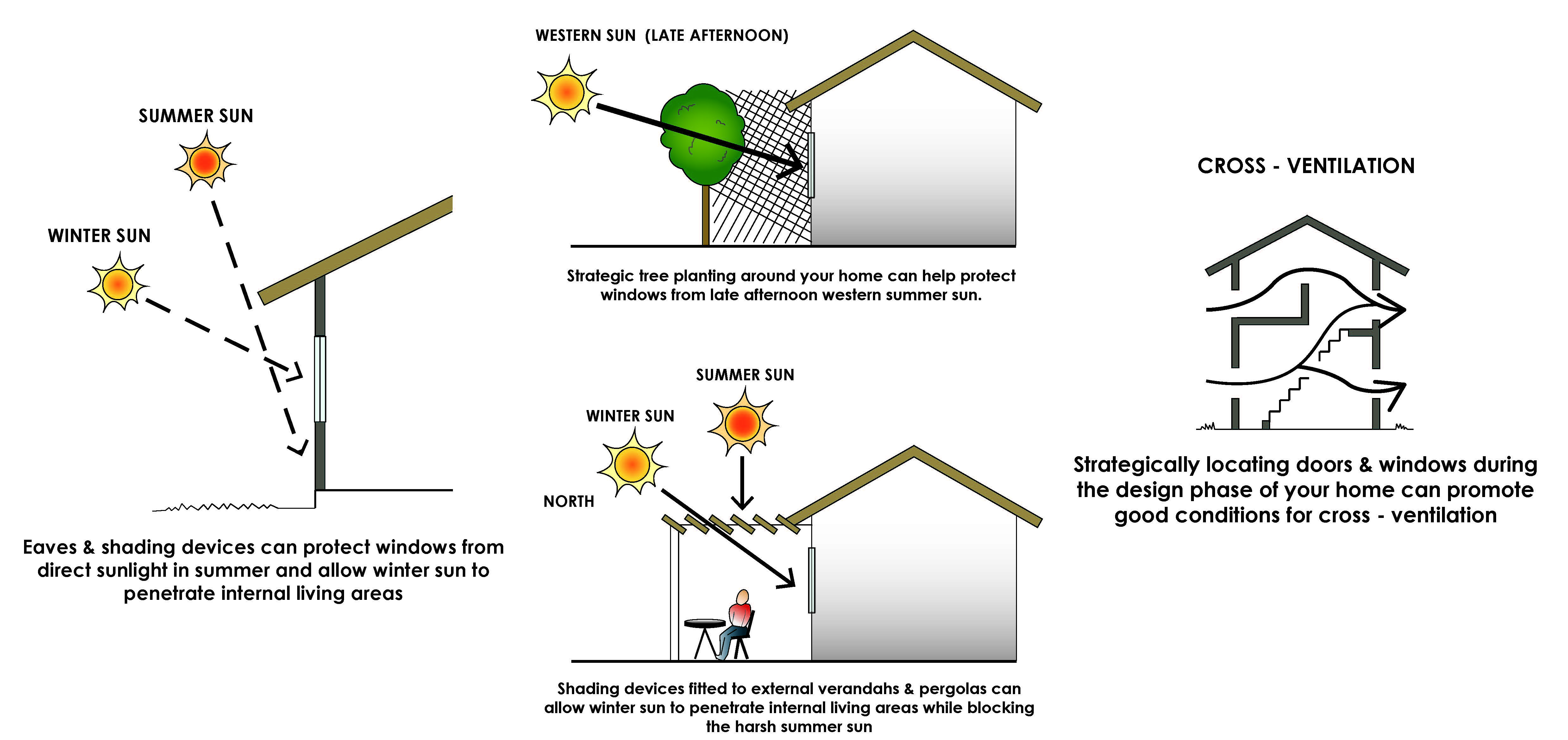What is Passive Design & How Does It Save You Money?
Image: Gallery Living – Picasso 235
Australia has always had a climate of extremes – requiring expensive heating and cooling to maintain a comfortable temperature. 40% of the energy costs of the average Australian home is spent on cooling or heating, battling the natural climate. With the most expensive power in the country, South Australians are increasingly using Passive Design to reduce costs and carbon emissions. Most established Australian homes are designed with form over function. Building a new home affords the opportunity to design a home with efficiency in mind from the ground-up.
What is Passive Design?
Fundamentally, passive design is considering natural sources of heating & cooling such as wind, light, shading, insulation and materials when designing homes. The orientation of a building and its building envelope (walls, roof, windows and floors) when all carefully thought out, can help maintain a comfortable temperature and save money.
What are the elements of Passive Design?
A fantastic resource when consulting a builder is ‘Your Home’ – A Guide To Environmentally Sustainable Homes. When deciding which block is right for your new home we recommend you choose a site that has the potential for heating and cooling orientation.
Orientation
For the winter & autumn months making use of natural light to keep your home warm can be achieved with northern facing windows to capture solar heat.
With summer temperatures reaching 40-50°c, good orientation is key with western walls and windows requiring shade in summer to keep the house cool.
Good orientation can also mean considering the placement of solar panels and the year-round path of the sun when installing.
Insulation
Correctly insulating a home creates a barrier that directs temperature flow while also weather-proofing and sound-proofing your home. To be completely effective, insulation requires pockets of air to capture heat.
Materials
While designing a home consider the thermal mass of the materials you are choosing. Thermal mass is the capability of a building material to absorb and store heat. For example, high thermal mass materials such as bricks and tiles have heat storage capacity whereas lighter-weight materials such as timber will not store as much heat. One material may be cheaper initially, but a more expensive alternative may save you money in the long-run.
Skylights
Providing both an excellent source of natural light to save on power – skylights can be a great way to gain heat in winter. A correctly placed skylight can create a fantastic open feeling and provide 3 times the light of a traditional window. If you are building in a hotter climate, it may be best to avoid too many skylights for the same reason.
Sealing Your Home
Sealing a home is a simple fix for both new and existing homes to keep a consistent temperature. The more extreme the outdoor temperature the more a home stands to benefit from fully sealing air leaks. Air leaks can contribute a 25% variance in temperature if there is a large difference between inside and outdoor temperature.
Glazing
Glazing your windows is a small investment with a big potential payoff in temperature control. It can be a major source of heat retention in winter, however it will also result in unwanted heat retention in summer. More than 80% of your home’s heat can be gained through glazing, if you live in a colder area it is well worth the investment.
Passive Design 1%-ers
If you already have an established home or buying a home off-the-plan, there are still some small changes you can make to increase your home’s energy efficiency.
- Add Solar Heating – use the power of the sun to reduce costs and emissions.
- Add Shade – adding extra shading (green walls, awning or shutters) will keep your house cooler and more comfortable.
- Replace Windows – If you have older windows with gaps, it may be time to upgrade with a tighter sealed style.
- Seal your Doors – Adding sealants to the frame and underneath your doors can help keep areas of your house at a consistent temperature.
If you want to find out more about the home building process – contact one of our friendly land consultants on (08) 8132 1115

